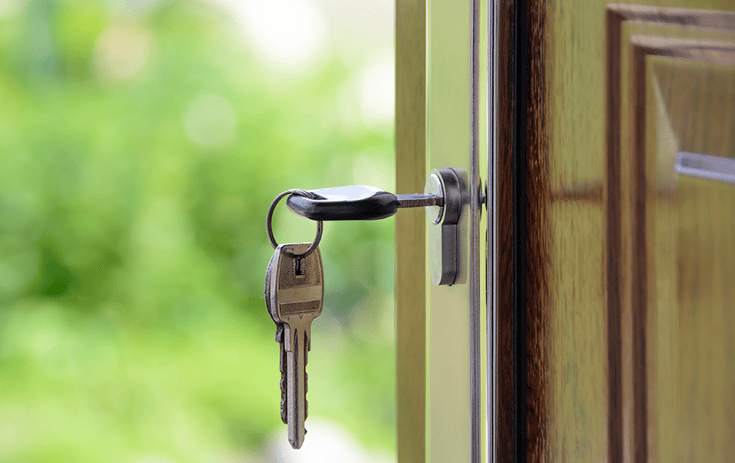Does buy-to-let property still make financial sense?
In our third and final blog in our series on property investing, we look at four recent changes that may affect the appeal and profitability of owning buy-to-let property.

A home is most likely the most expensive thing you’ll ever buy, so not something to do on repeat without good reason! While most people will stick to owning the house they live in, an estimated 4.6 million Brits have bought property to rent out as a source of income.
While owning buy-to-let property is a popular choice, a raft of tax changes and other measures targeting landlords in recent years have affected how profitable it can be. We explore four things to think about when weighing up the benefits of buy-to-let property.
1. The buy-to-let tax landscape
A big change here has been the phasing out of mortgage interest tax relief. Before 2017, private landlords could discount 100% of mortgage interest from their income tax bill, translating into relief of 40% or 45% for some. This was replaced in 2020 with a 20% tax credit. As well as costing more in lost relief, this means more overall income has to be declared, pushing some landlords into a higher tax bracket. With the income tax threshold frozen until 2028, this will become increasingly likely.
Taxes on buying and selling buy-to-let property have also risen. Landlords and other second-home owners have had to pay an extra 3% in stamp duty since 2016. Higher/additional-rate taxpayers are charged 28% in capital gains tax (CGT) on property versus 20% on other assets. With a much lower capital gains tax allowance – down from £12,300 to £6,000 last year and set to be halved again in April 2024 – selling up is getting more expensive year on year.
Although there are opportunities to offset costs against your CGT bill, this is unlikely to be as tax efficient as other investment options like pensions and ISAs which enjoy tax-free growth. Also, buy-to-let property comes under the scope of 40% inheritance tax, with none of the allowances given to main homes or pensions.
2. Mortgage rates and other costs
Unless you’re lucky enough to be able to buy an investment property outright, you’ll be painfully aware of escalating mortgage rates. With buy-to-let mortgages generally costing more than residential, and stricter money lending criteria (such as a minimum 25% deposit), landlords are especially feeling the pinch.
There are also other expenses to fund – maintenance, refurbishment, insurance, letting agency fees – at a time when the cost of living is sky-high. Landlords also need contingency for periods where the property is unlet, and, if things go sour with tenants, even potential legal costs.
3. Landlord responsibilities
More accountability and obligations for landlords are due to come in next year with the Renters Reform, designed to give tenants more rights and protection. There are also stricter standards of energy efficiency in the pipeline that will trigger upgrades for most rental properties, and some councils are imposing mandatory licensing for landlords. These new responsibilities may prove time consuming and costly to meet.
4. The value of property
There’s no doubt that house prices have seen phenomenal growth over the last few decades and have made some people a lot of money. However, 2023 saw UK house prices fall at the fastest pace in more than a decade.
In any case, investing should be a long-term pursuit, most effective if you can afford to lock capital away for ten years or more. If you need to access your money any sooner, you could find you have to sell at an unfavourable time and potentially make a loss with property.
So, is buy-to-let still worth it?
Today’s more punishing tax and regulatory landscape is certainly putting a squeeze on buy-to-let profits. During a cost-of-living crisis, there’s a limit to how much extra landlords can expect tenants to pay to widen the gap. It’s perhaps unsurprising, then, that private landlords are now twice as likely to sell a rental property as buy it.
Despite these challenges, buy-to-let property can still be lucrative and is a good choice for many people as part of a diversified investment portfolio. But if you’re just looking for the regular income that comes from a rental property, it’s worth exploring alternative options that offer more tax-efficiency and flexibility and may better suit your needs. Besides, you can still invest in property without having to buy an actual house!
At Goodmans, our starting point is getting to know you and your goals to build a financial plan that helps achieve what you want for you and your family. It’s not about picking the ‘best’ investments – be it buy-to-let property or anything else – it’s about finding a way to live the best life possible with what you have. Give us a call to kickstart a review.
See our blog on the risks of investing in buy-to-let property vs. the stock market
See our blog on how property stacks up as an investment
This article should not be considered investment advice or an offer of any product for sale. It does not represent a recommendation of any security, strategy or investment product. All information has been obtained from sources believed to be reliable but is not guaranteed. Past performance is not indicative of future results and no representation is made that the stated results will be replicated.


